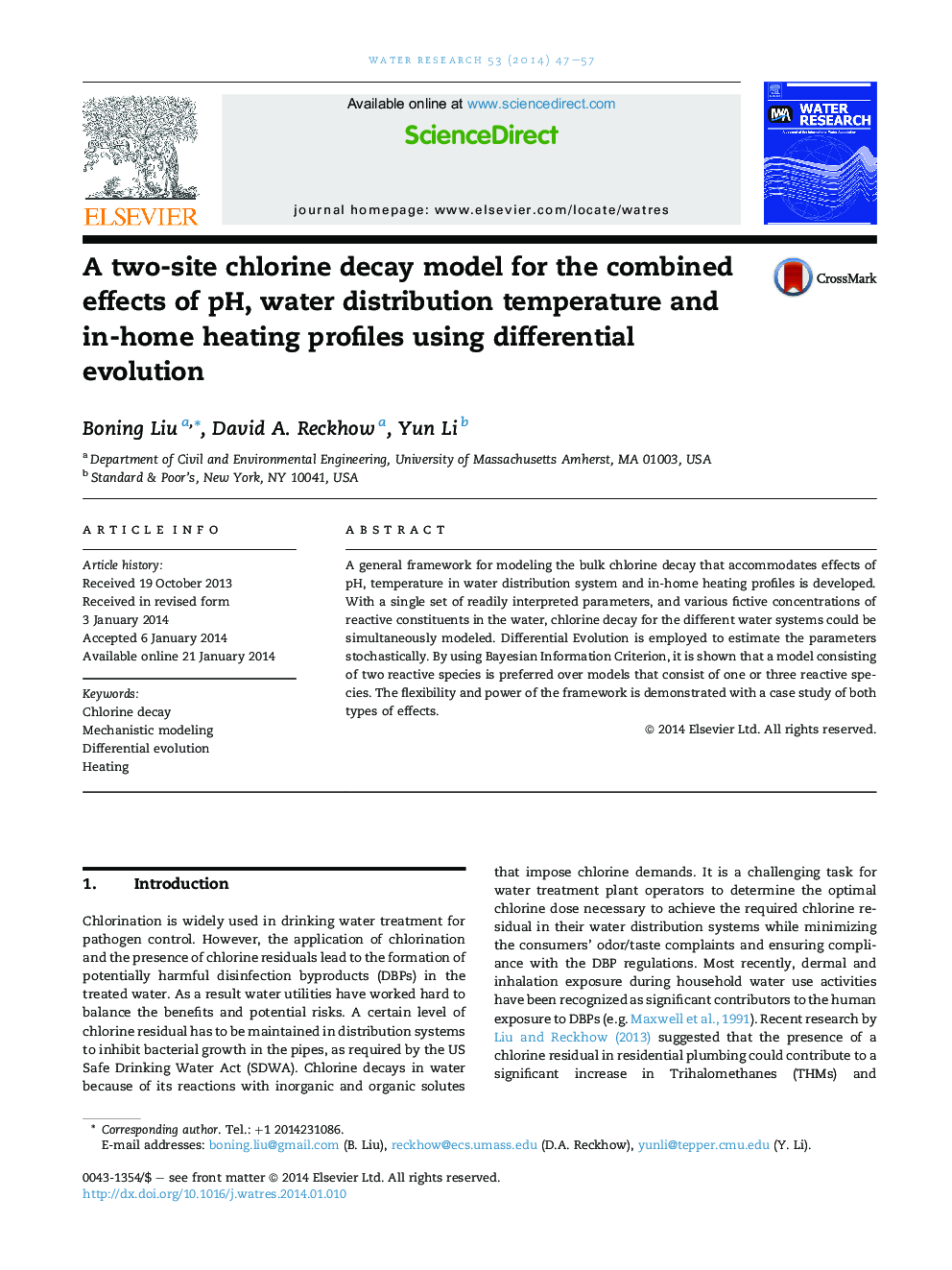| Article ID | Journal | Published Year | Pages | File Type |
|---|---|---|---|---|
| 4481594 | Water Research | 2014 | 11 Pages |
•Chlorine decay in home-heating scenarios was modeled.•pH and temperature effects were taken into consideration.•Stochastic differential evolution method was applied for parameter searching.•Two-site mechanistic model with interpretable parameters were found the best to fit the data.
A general framework for modeling the bulk chlorine decay that accommodates effects of pH, temperature in water distribution system and in-home heating profiles is developed. With a single set of readily interpreted parameters, and various fictive concentrations of reactive constituents in the water, chlorine decay for the different water systems could be simultaneously modeled. Differential Evolution is employed to estimate the parameters stochastically. By using Bayesian Information Criterion, it is shown that a model consisting of two reactive species is preferred over models that consist of one or three reactive species. The flexibility and power of the framework is demonstrated with a case study of both types of effects.
Graphical abstractFigure optionsDownload full-size imageDownload high-quality image (189 K)Download as PowerPoint slide
